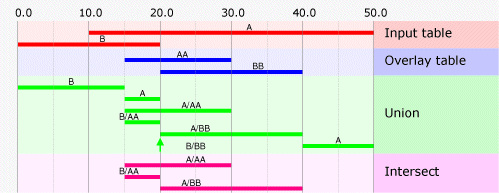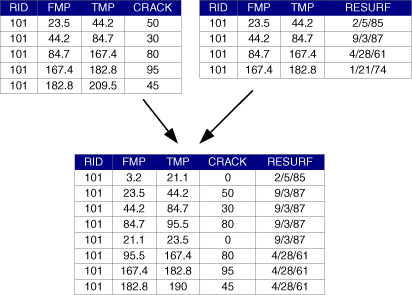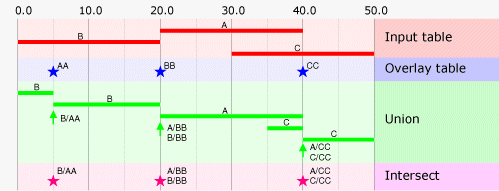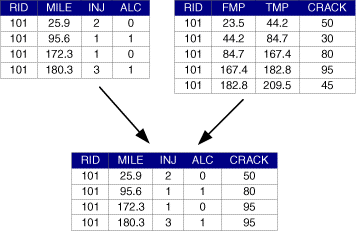In ArcMap, geographic data is represented on a map as a layer. When event data has been added to a map in the form of a layer, it can be queried according to feature locations and attributes to solve problems. Further, new spatial relationships can be discovered by asking questions such as, Where is . . .? Where is the closest . . .? and What intersects?
Learn more about adding route events
Learn more about querying route data
Learn more about querying maps
Overlaying events is another way to create new event data. This process combines two input event tables to create a single output event table. The new table can be used to analyze event data in ways not possible using traditional spatial analysis techniques.
The new event table can contain either the intersection or the union of the input events. The union of the input events splits all linear events at their intersections and writes them to the new event table. The intersection of the input event tables writes only overlapping events to the output event table.
Line-on-line, line-on-point (same as point-on-line), and even point-on-point event overlays can be performed.
Learn more about performing event overlays
Line-on-line overlay
A line-on-line overlay involves overlaying two line event tables to produce a single line event table.

The example below shows the union of a line event table that stores pavement information and another line event table that stores pavement resurfacing dates. The result can be used, for example, to find the characteristics of the oldest paved sections.

Line-on-point overlay
A line-on-point overlay involves overlaying a line event table and a point event table. The process produces a single point event table.

The example below shows the intersection of a point event table containing accident locations and a line event table containing pavement information. The result can be used, for example, to analyze pavement characteristics where accidents occurred.
